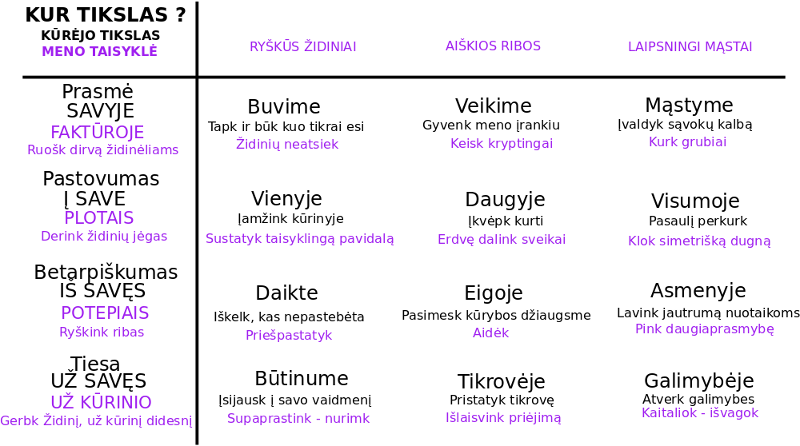- MathNotebook
- MathConcepts
- StudyMath
- Geometry
- Logic
- Bott periodicity
- CategoryTheory
- FieldWithOneElement
- MathDiscovery
- Math Connections
Epistemology
- m a t h 4 w i s d o m - g m a i l
- +370 607 27 665
- My work is in the Public Domain for all to share freely.
- 读物 书 影片 维基百科
Introduction E9F5FC
Questions FFFFC0
Software
extra notes:
Creativity: Finding what to do with oneself (one's freedom) - why to do with oneself (one's freedom) - a purpose for one's freedom
Beauty: Disgust is impossible because there is no inside. Beauty: Perception that there is a Why.
Positive emotions distinguish between being in touch with and not being in touch with God.
Search for Why in the confines of this world.
Why is Nullsome - ambiguity in this world of that which is beyond this world True, direct, constant, significant Purposefulness
Reflect the purpose
Christopher Alexander's principles of life are rules for art
Topologies
- Purpose of art
- Topologies
- Principles of life
- In mathematics
- Critique of Judgment - 12 categories
- Geometry of moods - 4 geometries
- Relate to 2+3=5
- Reasons why we ask questions
Beauty
- As the impossibility of disgust
- In the sixsome

Four reflective judgments - self-understandings of the limits of our imagination
- the agreeable - sensory judgments - purely subjective
- the beautiful - subjective universal - what people ought to believe - possession of a form of finality, designed with a purpose, although function may not be clear - if function is clear, then object must be well-suited
- the sublime - subjective universal - what people ought to believe - beyond the limits of comprehension - worthy of fear
- the good - judgments of conformance to a moral law - purely objective
Scopes of interpretation for purposes of understanding each other: four discourses:
- whether: what it is, of itself: good or not
- what: what it is to me, in particular: agreeable or not
- how: what it is to people in general: beautiful or not
- why: what it is to God: sublime or not
The faculty of interpreting suitableness, and its consequence, in interpreting purposiveness and beauty.
Aesthetic judgments of the beautiful: four moments:
- 1) they are disinterested
- 2) they are universal, expecting others to agree
- 3) they are purposive, but without a definite purpose
- 4) they are a necessary consequence of the constitution of the observer
